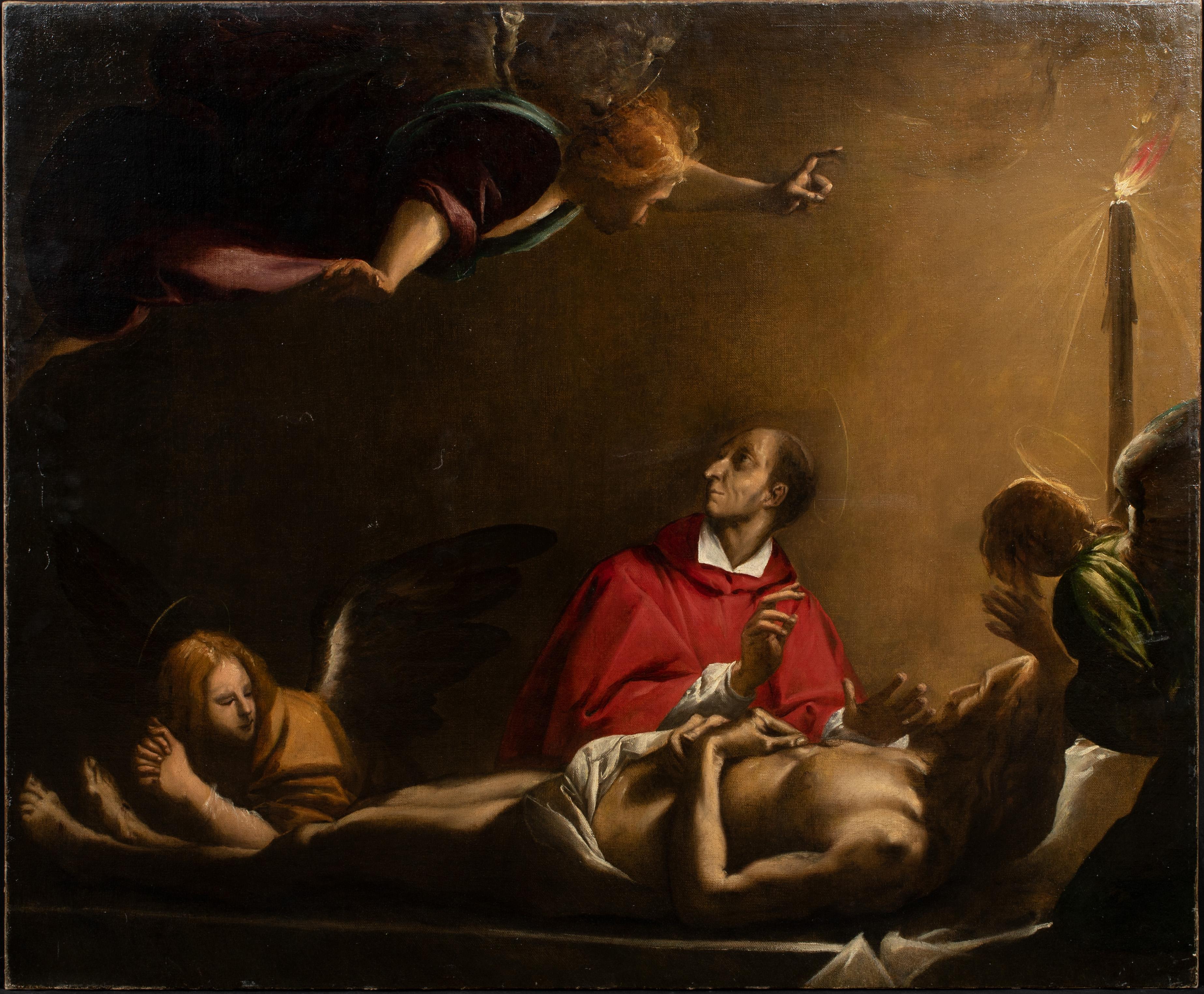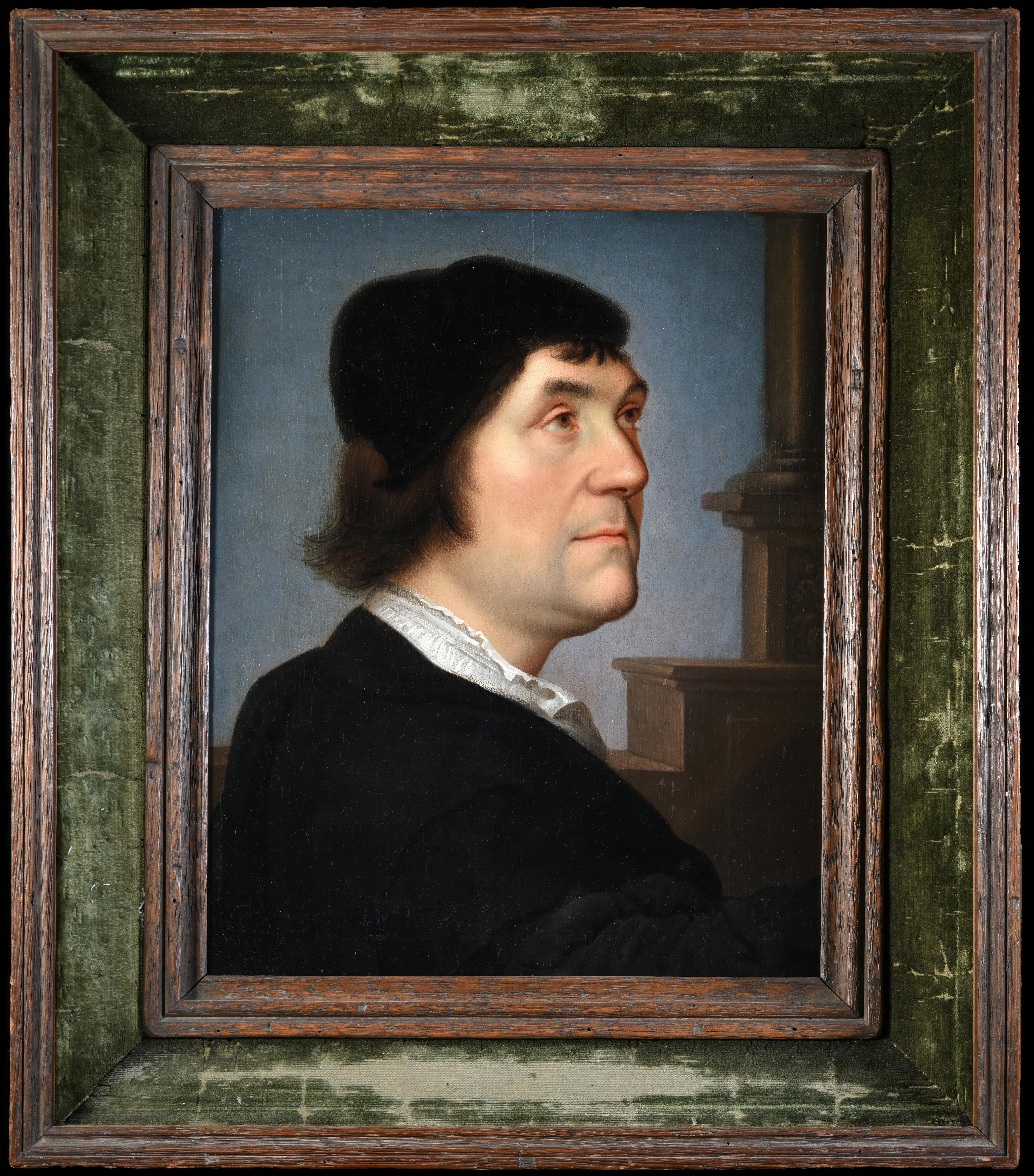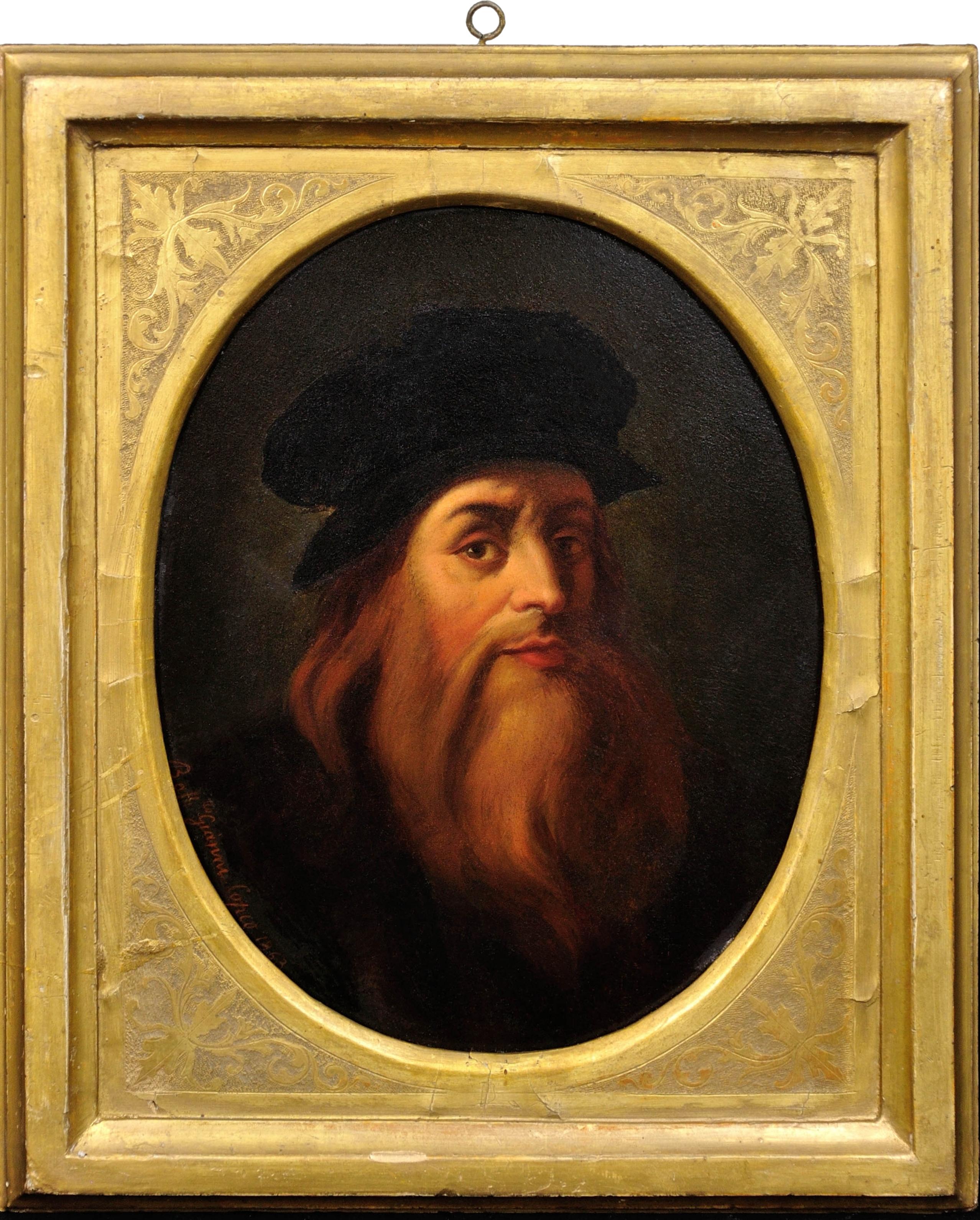Items Similar to Saint Cosmas And Saint Damian Attributed To Bonifacio Bembo
Want more images or videos?
Request additional images or videos from the seller
1 of 11
Saint Cosmas And Saint Damian Attributed To Bonifacio Bembocirca 1454 -1458
circa 1454 -1458
About the Item
Attributed to Bonifacio Bembo
c.1444-1477 Italy
Saint Cosmas and Saint Damian
Tempera on panel
These exceptionally rare early Renaissance panels of Saint Cosmas and Saint Damian are an extraordinary new discovery. Based on the research of art historians Marco Tanzi and Andrea de Marchi, it is believed that these represent the missing panels from the famed polyptych formerly displayed on the altar of the Chapel of San Nicola da Tolentino in the Church of Sant’Agostino in Cremona, Italy. To find two matching early Renaissance panels outside of a museum or church, particularly in such remarkable condition, is an extraordinary rarity.
The central and left-sided panels of the original five-part polyptych are currently in the collection of the Museo Civico Ala Ponzone in Cremona. These panels have luckily remained intact, and respectively portray the Madonna and Child Enthroned with Angels and Donor, Saint Nicholas of Tolentino (the chapel’s namesake) and Saint George.
While the present panels have since been reduced, that they belong to the Cremonese altarpiece is confirmed by a number of stylistic elements. All five panels contain the same rich decorative arabesque pattern on their stamped gold background, while the figures’ knurled haloes are identical in both their fineness of line and use of perspective. The proportions of the figures coincide perfectly; Saints Cosmas and Damian would have originally also been depicted as full-length figures, fitting into the vertical, Gothic style of the altarpiece.
According to the Christian religion, Saint Cosmas and Saint Damian were 3rd century physicians born in Arabia. Little is known about their lives except that they were reputedly twin brothers and that they were martyred in Syria during the persecution of Emperor Diocletian. It was believed that the saints were skilled in healing, and when their medicines failed, their faith and prayers could always perform miracles. Thus, the saints are often depicted with their medical equipment while wearing the traditional medieval doctor’s garb of crimson robes and distinctive round red hats.
The saints are similarly depicted in the present panels, though considering the manner in which they have been cut, their medical tools are not immediately evident. The saints were highly popular as patrons of wealthy families during the Gothic and Renaissance eras, particularly the Medici, and thus they occur frequently in art from the era. The twins, for instance, are found in the famed San Marco Altarpiece by Fra Angelico in the San Marco Museum (Florence), as well as in a set of Medici panels crafted by Filippo Lippi currently in the collection of the National Gallery (London).
Along with the remainder of the Cremonese altarpiece, these present panels have been attributed to the Northern Italian Renaissance painter Bonifacio Bembo. Active in Cremona throughout the 15th century, he would have been a natural choice for the construction of the altarpiece, which was to be part of a new chapel dedicated to San Nicola da Tolentina in the church of Sant'Agostino in Cremona. The Cavalcabò chapel, which is also in the Sant'Agostino, is similarly attributed to him. Several other of his works can be found in museums and churches throughout Italy and beyond, including the Pinacoteca di Brera (Milan), Denver Museum of Art, and the Musée des Arts Décoratifs (Paris), among others.
Circa 1454-1458
Panel: 14 5/8” high x 11 3/8” wide, (37.15 x 28.89 cm)
Frame: 22 3/4” high x 19 1/2” wide x 2 1/2" deep (57.79 x 49.53 x 6.35 cm)
- Attributed to:Bonifacio Bembo (1444 - 1477)
- Creation Year:circa 1454 -1458
- Dimensions:Height: 22.75 in (57.79 cm)Width: 19.5 in (49.53 cm)Depth: 2.5 in (6.35 cm)
- Medium:
- Movement & Style:
- Period:
- Condition:
- Gallery Location:New Orleans, LA
- Reference Number:
About the Seller
5.0
Vetted Seller
These experienced sellers undergo a comprehensive evaluation by our team of in-house experts.
Established in 1912
1stDibs seller since 2013
15 sales on 1stDibs
Typical response time: 4 hours
- ShippingRetrieving quote...Ships From: New Orleans, LA
- Return PolicyThis item cannot be returned.
More From This SellerView All
- Virgin and Child with the Infant Saint JohnBy Domenico PuligoLocated in New Orleans, LAA masterful example of Italian Mannerist painting, this exceptional panel was composed by the renowned Florentine painter Domenico Puligo. Alongside Jacopo Pontormo and Rosso Fiorentino, Puligo is remembered as one of the foremost figures of the Mannerist movement that rose to prominence during the 16th century in Florence. This panel of the Virgin Mary with the Christ child and Saint John the Baptist is a characteristic example of his celebrated devotional images, which grace museums such as the Metropolitan Museum of Art (New York), Museo del Prado (Madrid), Palazzo Borghese (Rome), and Palazzo Pitti (Florence), among many others. Puligo’s skill with color is fully demonstrated in the beautifully preserved work. Considering its age, the vibrancy and the sheer range of color is remarkable. The Virgin Mary’s crimson dress...Category
16th Century Mannerist Portrait Paintings
MaterialsOil, Panel
- Portrait Of A Gentleman By Frans HalsLocated in New Orleans, LAFrans Hals 1582-1666 Dutch Portrait of a Gentleman (possibly Theodore Blevet) Oil on panel “Frans Hals is a colourist among the colourists...Frans Hals must have had twenty-seven blacks...Category
17th Century Old Masters Portrait Paintings
MaterialsOil, Panel
- Josianna, Jeune Femme au Ruban by Jean Gabriel DomergueBy Jean-Gabriel DomergueLocated in New Orleans, LAJean-Gabriel Domergue 1889-1962 French Josianna, jeune femme au ruban (Josianna, Young Woman With Ribbon) Signed "Jean Gabriel Domergue" (lower left) Oil on panel A young French beauty known as Josianna is the subject of this work by Jean-Gabriel Domergue, and the oil on panel is a perfect example of the portraits for which the artist is renowned. His model embodies the concept of the la belle Parisienne: slender, swan-like women bearing an unmistakable grace and style. Domergue includes a delicate pink ribbon around her neck, suggesting a fashionable garment, set against a soft pastel-colored backdrop. The artist's oeuvre encompasses women from all facets of society, from aristocratic figures such as Liane de Pougy and Nadine, Baroness de Rothschild...Category
20th Century Post-Impressionist Figurative Paintings
MaterialsPanel, Oil
- A Pompeian LadyBy John William GodwardLocated in New Orleans, LAJohn William Godward 1861-1922 British A Pompeian Lady Signed and dated "J.W. Godward 1904" (lower right, partially covered by frame) Oil on canvas One of the last and greatest Victorian neoclassical painters, John William Godward is celebrated for his flawlessly executed images of graceful women posed in idealized ancient settings. In this work, entitled A Pompeian Lady, a classical beauty is caught idling in a moment of quiet, solitary reflection. Godward's elegant subjects are depicted with a degree of technical mastery that remains unsurpassed, and the work's dramatic palette, luxurious fabrics and classical vision are all characteristics of his unique take on the neoclassical style. Godward was unmatched in terms of his technical skill and attention to detail. A master of contrasting textures, he paints a diaphanous gown draping against the model’s smooth, milky white skin, which sits against the painstakingly rendered individual hairs of a tiger’s pel. Scintillating color permeates the canvas as well, energizing the otherwise static scene. Each element is given careful attention, and the overall effect is one of both immaculate technique and sensual tactility. Along with his contemporary and mentor, Sir Lawrence Alma-Tadema, Godward set the tone for the Victorian neoclassicist movement. He built his career upon creating images of idealized feminine beauty infused with a Greco-Roman-inspired style. Though greatly influenced by Alma-Tadema, Godward distinguished himself through his predilection for the solitary female figure. His fame rose dramatically in the first few years of the 20th century, when the present work was completed, due to the burgeoning strength of the British Empire and the Victorian society’s preoccupation with ancient Rome. To many of the newly affluent, Roman society was, as Iain Gale writes, “a flawless mirror of their own immaculate world.” The sensuality and mystery of Godward’s maidens, combined with his impressive antique backdrops...Category
Early 20th Century Academic Portrait Paintings
MaterialsOil, Canvas
- Portrait Of Horatio Nelson Attributed To Lemuel AbbottLocated in New Orleans, LAAttributed to Lemuel Abbott 1760-1803 | English Portrait of Horatio Nelson Oil on canvas This previously unknown portrait is an important discovery in British Naval history. In Admiral Lord Nelson's illustrious and well-studied life, there existed a "silent period" spanning 16 years during which no known portraits of Nelson existed. The discovery of this 1790 portrait, rendered just before his reentry into the Navy, is a significant development for Nelson scholars, adding new insight into the leader's life prior to his legendary command as Admiral of the British Navy. Almost certainly painted by Lemuel Abbott, the official portraitist of Admiral Nelson, the rendering depicts the naval titan in casual dress. This is one of the two final depictions of Nelson before he acquired the war-inflicted injuries that marked his later years. In 1790, Britain was at peace, and Lord Nelson found himself residing in Burnham Thorpe with his newlywed wife, Frances. Having served with great distinction in South America and the West Indies, he garnered much local acclaim. Yet, the uncertainty of returning to the sea weighed heavily on his mind. At the age of thirty, he lived the life of a country gentleman managing his estate. Only one other much smaller portrait of Nelson in civilian attire exists, a much smaller rendering from 1800 currently held at the National Portrait Gallery. Compelling and atmospheric, the oil on canvas offers viewers a rare glimpse into the visage of a youthful and resolute Nelson, a man driven by an unwavering desire to forge his reputation in the art of naval warfare. This portrait had long been believed by the Nelson family to portray Edmund Nelson, Horatio Nelson's father. When connoisseur Jeremy Knight acquired this treasure directly from the Nelson family, he postulated that the work actually depicted the famed Admiral and not his father, as it was painted around 1790, and the elder Edmund Nelson would have been 68 years old at that time. Knight then hired the renowned Nelson scholar Martin Downer, the former Sotheby's expert and author of the bestselling books Nelson's Purse and Nelson's Lost Jewel, to confirm his hunch. It has now been confirmed by Martin Downer that this portrait is the missing...Category
18th Century Academic Portrait Paintings
MaterialsCanvas, Oil
- Henry Bowles Howard, 12th Earl Of Suffolk And 5th Earl Of BerkshireLocated in New Orleans, LASir Joshua Reynolds 1723-1792 | British Sir Henry Bowles Howard, 12th Earl of Suffolk and 5th Earl of Berkshire Oil on canvas Sir Joshua Reynolds is unequivocally considered the most important English portraitist of the 18th century who was instrumental in adapting the Grand Manner style in the portrait genre. In fact, when the Royal Academy was founded in 1768, Reynolds was elected its first President, setting the precedent of quality for which all other portraitists would strive. Reynolds's portrait of Henry Bowles Howard, 12th Earl of Suffolk, showcases his genius in the genre and mastery over the medium. Reynolds’s portrait of the Earl expertly invokes classical values with strong lighting, rich colors and expert attention to detail to help underscore the prominence and revered echelon of the sitter. Howard was an esteemed British politician and Knight of the Garter. He served as Secretary of State for the Northern Department from 1771 to 1779, and he played a key role in utilizing mercenaries during the American Revolution and safeguarding Sweden's independence. The portrait employs Reynolds's signature style to render Howard rightfully as a gentleman of distinction. Captured seated in a stately library, the Earl appears learned and austere as he places one hand upon a stack of important documents and looks wistfully into the distance. Reynolds makes these compositional choices decisively, as the seated position gives Howard a weighty appearance of importance and the semi-profile turn captures his countenance at an attractive angle that highlights his strong, masculine features. The work draws on the classical conventions of Greek and Roman art and the Italian Renaissance masters, anchoring the nobleman in a history of refinement. Everything from his strong yet welcoming expression to his pale face enlivened by a rush of blood to the cheeks presents the picture of a strong, vital and powerful leader. As the first president of the Royal Academy in London, Reynolds’s commissions raised the status of an artist in Britain during the Romantic period and also established the portrait as an esteemed high art genre that garnered equal import to the history paintings that reigned supreme in decades prior. Today, Reynolds’s works grace the walls of the most important museums in the world, including the Louvre, the Metropolitan Museum of Art, and the National Gallery in London, among others. Circa 1770 Canvas: 50 1/2" high x 40 1/4" wide Framed: 61" high x 52 1/2" wide x 3 1/2" deep Provenance: Sir Henry Howard, 12th Earl of Suffolk and 5th Earl of Berkshire, 1739-1779 His mother, Lady Mary Howard, née Finch, Lady Andover, d. 1803 Acquired by descent to her daughter, Frances, and her husband Richard Bagot (later Howard) Acquired by descent to their daughter, Mary (1784-1877), and her husband Col. Fulke Greville Upton (later Howard), d. 1846 Acquired by descent to Lieutenant Colonel H.R.G. Howard Sale, Christie's, London, March 24, 1961, no. 29 Julius Weitzner, London and New York Sale, Paris, Musée Galliéra, December 7, 1965, no. 165 Newhouse Galleries, New York, NY Mr. and Mrs. F. Howard Walsh, Fort Worth, Texas, 1966 Walsh Family Art Trust Private collection, Oregon M.S. Rau, New Orleans Exhibited: British Institution, London, 1844, no. 130, loaned by the Hon. Fulke Greville Howard. South Kensington, "Second special exhibition of National Portraits," 1867, no. 478, lent by the Hon. Mrs. Greville. Agnew's, London, 1903, no. 17. Literature: Algernon Graves and W. V. Cronin, A History of the Works of Sir Joshua Reynolds, P.R.A., vol. 3 (London, 1899), p. 945. David Mannings...Category
18th Century Other Art Style Portrait Paintings
MaterialsCanvas, Oil
You May Also Like
- Portrait of an Italian NoblewomanLocated in London, GB15th century, Italian Circle of Antonio del Pollaiuolo (1429-1498) Portrait of an Italian Noblewoman Oil and tempura on poplar panel With partial inscription: ALZETAPIN Provenance:...Category
15th Century and Earlier Renaissance Portrait Paintings
MaterialsOil, Tempera, Wood Panel
- The Lamentation Of The Death Of Christ, 17th CenturyLocated in Blackwater, GBThe Lamentation Of The Death Of Christ, 17th Century after Pier Francesco Mazzucchelli (1573-1626) Fine huge 17th Century Italian Old Master depiction of the Lamentation at the Dea...Category
18th Century Renaissance Portrait Paintings
MaterialsTempera, Panel
- A portrait of John Poyntz, after Hans Holbein, ca. 1644 - 1674By Hans HolbeinLocated in Brooklyn, NYA portrait of courtier and politician John Poyntz, after Hans Holbein, circa 1644 - 1674. This painting is based on a drawing by Hans Holbein, part of the drawings collection of the ...Category
Mid-17th Century Renaissance Portrait Paintings
MaterialsOil, Wood Panel
- 1700's Old Master Oil Wood Panel Five Female Saints Beautiful Quality workLocated in Cirencester, GloucestershireFigurative Group Roman Catholic Saints Italian School, late 17th century/ early 1700's sketch of a lamb showing verso to panel oil painting on panel, framed framed: 20 x 24 inches bo...Category
17th Century Renaissance Portrait Paintings
MaterialsWood Panel, Oil
- after Leonardo da Vinci dated 1863. Self Portrait. Uffizi Gallery in Florence.By Leonardo da VinciLocated in Sutton Poyntz, DorsetSelf-Portrait of Leonardo da Vinci 1452 - 1519 after & of Leonardo da Vinci Italian, dated 1863 Signed Gianni Oil on Panel. Oval Image size 8.3 inches x 6.5 inches ( 21cm x 16.5cm ) ...Category
Mid-19th Century Renaissance Portrait Paintings
MaterialsOil, Panel
- after Andrea del Sarto circa 1863. Portrait of Baccio Bandinelli. Uffizi GalleryBy Andrea Del SartoLocated in Sutton Poyntz, DorsetPortrait of Baccio Bandinelli 1493 - 1560 after Andrea del Sarto 1486 – 1530 Italian, created Circa 1863 Signed Gianni Oil on Panel. Oval Image size 8.3 inches x 6.5 inches ( 21cm x ...Category
Mid-19th Century Renaissance Portrait Paintings
MaterialsOil, Panel
Recently Viewed
View AllMore Ways To Browse
Early Renaissance
Saint Painting Antique
Saint George
Renaissance Panel
Antique Round Painting
Renaissance 15th
4 Panel 2 Sided Panels
Antique Doctors
Italian Renaissance Style Art
Arabesque Paintings
15th Saint
Portrait Doctor
Portrait Of A Doctor
Medieval Panel
Angel With Child
Medieval Saint
Italian Renaissance 15th
Italian Renaissance 15th Century




